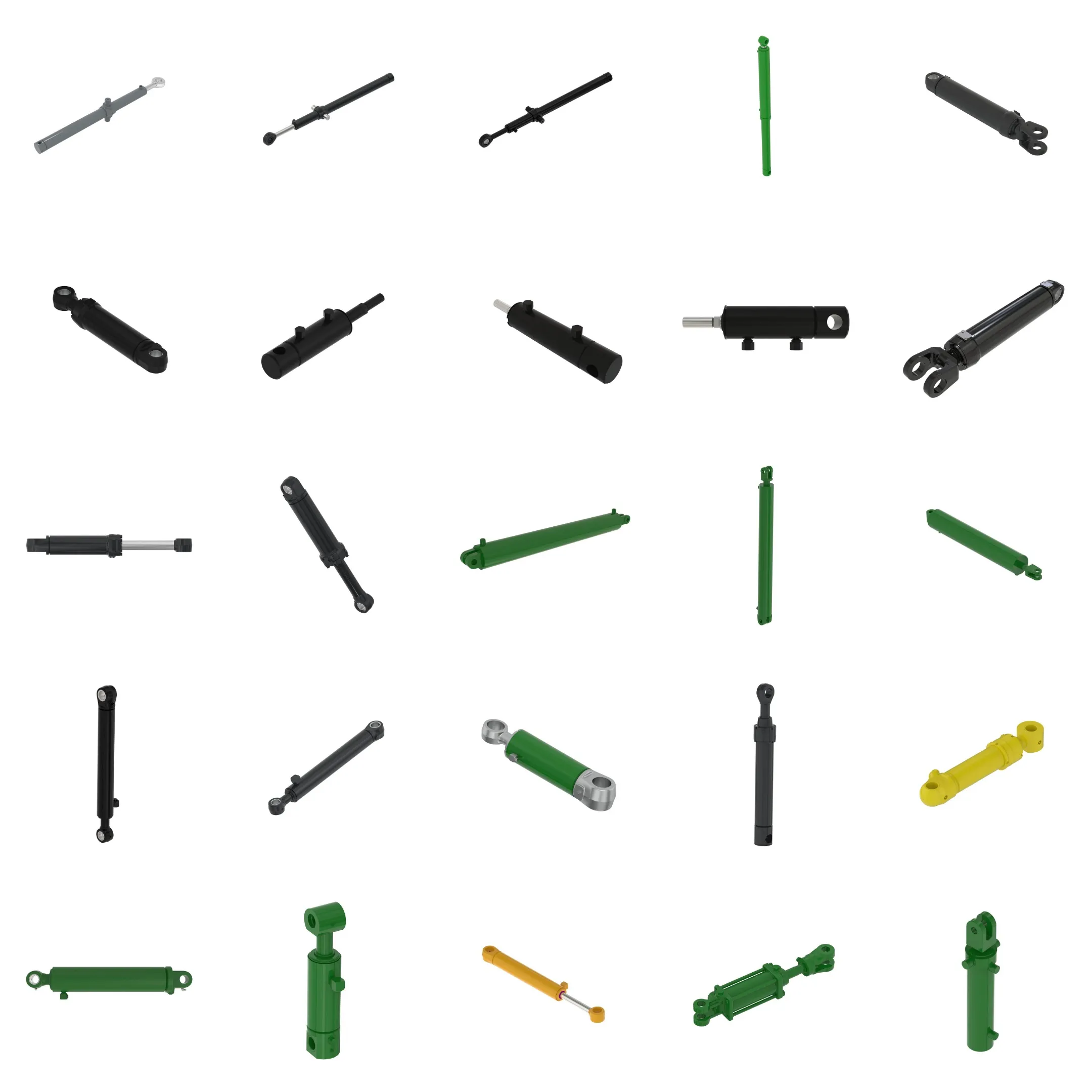Replacement Of AHC16418 Hydraulic Steering Cylinder
Como cilindros hidráulicos uno de los fabricantes, los surtidores y los exportadores de productos mecánicos, ofrecemos cilindros hidráulicos y muchos otros productos.
Póngase en contacto con nosotros para más información.
Correo:sales@hydraulic-cylinders.net
Fabricante proveedor exportador de cilindros hidráulicos.
Replacement Of AHC16418 Hydraulic Steering Cylinder
Product Definition
The Replacement Of AHC16418 Hydraulic Steering Cylinder is a crucial component used in hydraulic steering systems. It plays a vital role in ensuring the smooth operation and maneuverability of various machinery and equipment.
Specifications and Models
Specifications:
- Weight: 74.156 lb
- Height: 4 in
- Width: 6.2 in
- Length: 35.5 in
Models:
- 744 P
- 744 X
- 744K
- 744K-II
- 744L
- 824 P
- 824 X
- 824K
- 824L
Product Features
1. Improved Equipment Performance
Replacing damaged or worn hydraulic cylinders can restore the normal operational capability of equipment, ensuring optimal performance in various applications.
2. Enhanced Safety
Regularly replacing hydraulic cylinders can minimize safety hazards caused by cylinder failures, thus ensuring the safety of operators and equipment.
3. Overload Protection
New cylinder designs often incorporate better overload protection mechanisms, improving overall safety during operation.
4. Quick Installation
Modern hydraulic cylinders are designed with ease of installation and replacement in mind, reducing downtime and facilitating efficient installation processes.
5. Standardized Components
Many hydraulic cylinders are standardized products, making it easier to obtain replacement parts from the market.
Applications
The Replacement Of AHC16418 Hydraulic Steering Cylinder finds its application in various scenarios, including but not limited to:
1. Excavators
In excavators, the hydraulic cylinder in the boom or bucket may become damaged due to prolonged use or overloading, requiring replacement to restore proper operation.
2. Cranes
The hydraulic cylinders in crane lifting arms are prone to wear during frequent lifting and lowering operations. Regular replacement ensures safety and optimal performance.
3. Tractors
Front-end loader hydraulic cylinders in tractors may experience leaks or performance degradation during continuous lifting and tilting operations, necessitating replacement.
4. Harvesters
Hydraulic cylinders in harvesters endure high pressure during the harvesting process, making them susceptible to fatigue damage. Timely replacement ensures sustained productivity.
5. Automated Production Lines
Hydraulic cylinders are used to control robotic arms and other automated equipment. Cylinder failure can significantly impact production efficiency and should be promptly addressed.

Maintenance Tasks
Regular maintenance tasks for the Replacement Of AHC16418 Hydraulic Steering Cylinder include:
1. Regular Inspections
Periodic inspections ensure early detection of any issues and allow for timely repairs or replacements.
2. Proper Lubrication
Applying appropriate lubrication helps reduce friction and wear, extending the lifespan of the hydraulic cylinder.
3. Seal Replacement and Calibration Checks
Replacing worn seals and conducting calibration checks ensures optimal performance and prevents leaks.
During installation, it is crucial to provide proper guidance for aligning the cylinder, recommend using suitable installation brackets for stability, and follow recommended inspection, repair, and replacement procedures to maximize the lifespan of the Replacement Of AHC16418 Hydraulic Steering Cylinder.

Safety Considerations and Environmental Factors
When using hydraulic cylinders, implementing appropriate safety measures is essential to protect operators and equipment. This includes following safety guidelines, using proper personal protective equipment, and conducting regular safety inspections and training.
Troubleshooting and Common Issues
Common issues associated with hydraulic cylinders include:
1. Cylinder Leakage
If the hydraulic cylinder exhibits leaks, it may indicate seal damage or improper installation. Inspect and replace seals as needed.
2. Cylinder Sticking
A cylinder that sticks or fails to extend/retract smoothly may be due to insufficient lubrication or misalignment. Apply appropriate lubrication and realign if necessary.
3. Cylinder Overheating
Overheating can result from excessive friction or inadequate fluid flow. Check for obstructions, ensure proper lubrication, and monitor fluid temperature.
When troubleshooting these issues, it is important to diagnose the root cause accurately and provide appropriate solutions. Regular preventative measures can help minimize potential problems.
Design Considerations and Selection Criteria
When selecting a hydraulic cylinder, several key factors should be considered:
1. Load Capacity
Choosing a cylinder with the appropriate load capacity ensures optimal performance in different applications.
2. Sealing Performance
Seals made from durable materials such as polyurethane or nitrile rubber improve sealing reliability and longevity.
3. Durability
A well-designed cylinder with a finely treated cylinder body and threaded end surface enhances durability and wear resistance.
4. Safety
Hydraulic cylinders with built-in safety features offer additional protection against potential failures and accidents.
5. Maintainability
Consider cylinders that are easy to maintain, with readily available replacement parts and rebuilding services, to prolong their lifespan.
Sealing and Lubrication
Hydraulic cylinders utilize various sealing components, such as piston seals and rod seals, often made from wear-resistant materials like polyurethane. The cylinder body and threaded end surface are meticulously treated to enhance wear resistance. Regular lubrication with suitable hydraulic oil is necessary to ensure proper functioning and longevity.
Regular Inspections and Preventative Maintenance
Regular inspections and preventative maintenance are essential for maintaining the performance and reliability of hydraulic cylinders. Proper installation, lubrication, and adjustment play vital roles in prolonging the cylinder’s lifespan. It is recommended to provide accurate installation guidelines, suggest the use of appropriate installation brackets for stability, recommend inspection, repair, and replacement procedures, and offer replacement parts and rebuilding services to maximize the cylinder’s longevity.
Company Introduction
Our company is a leading manufacturer and wholesale distributor of replacement hydraulic cylinders. With a comprehensive range of products, we have established ourselves as a prominent player in both domestic and international markets.
Visite nuestra fábrica de RV:
Haga un recorrido por nuestra fábrica de RV con lo siguiente
Cilindro hidráulico Aplicación:


